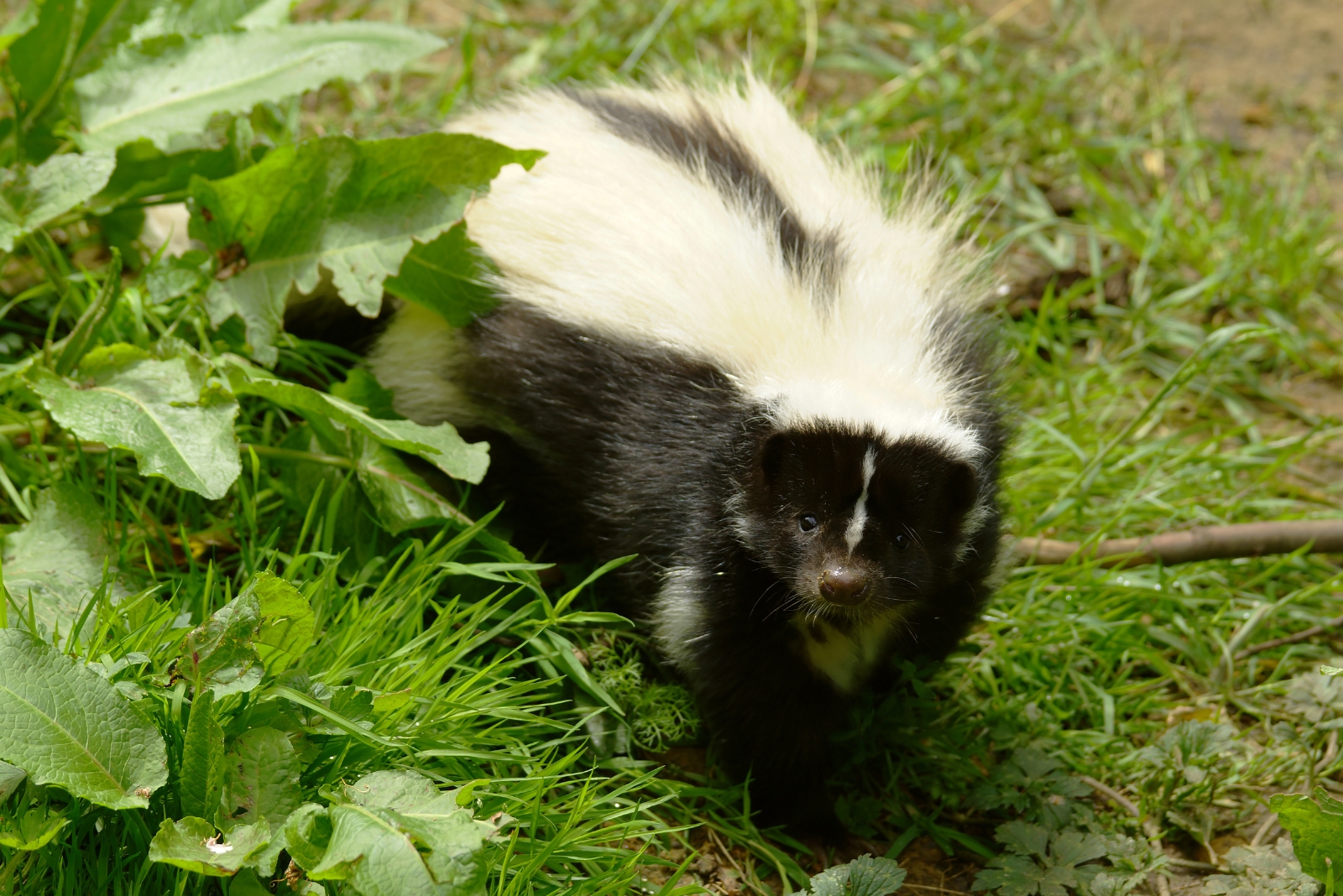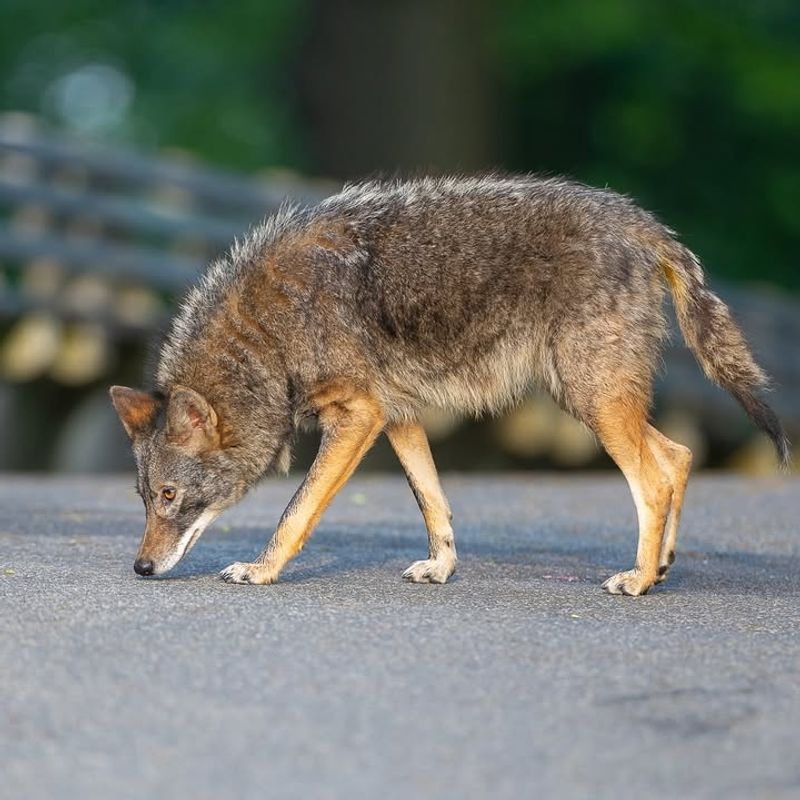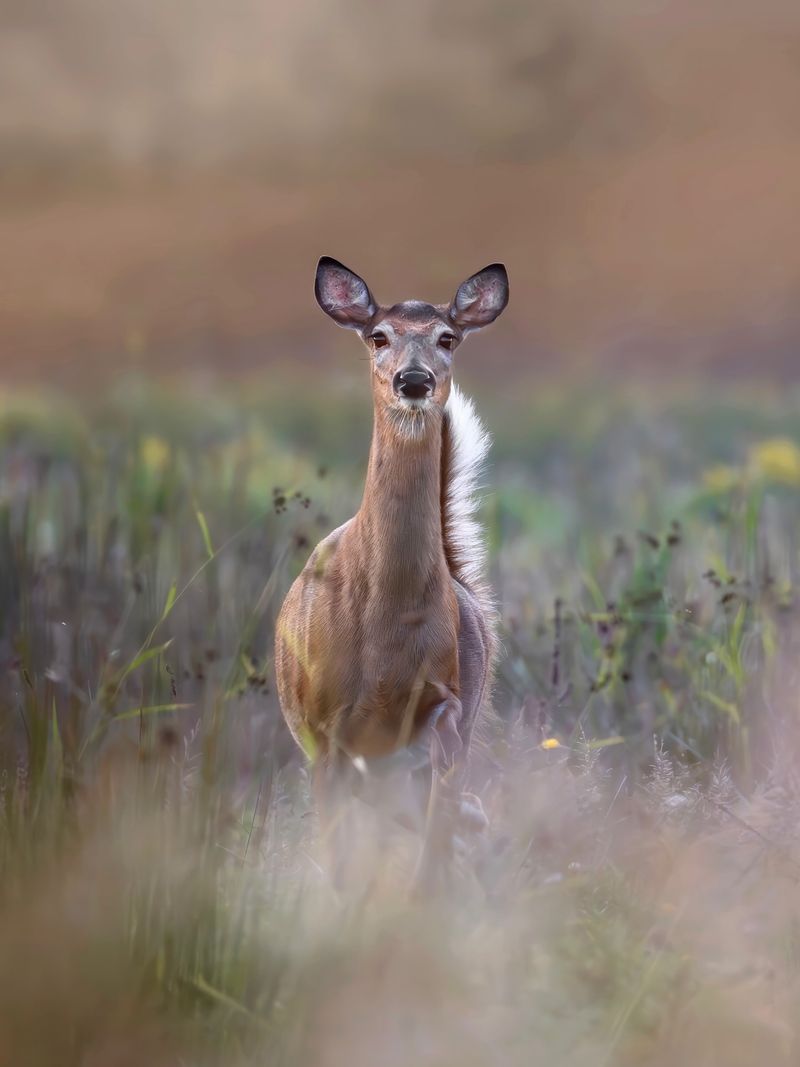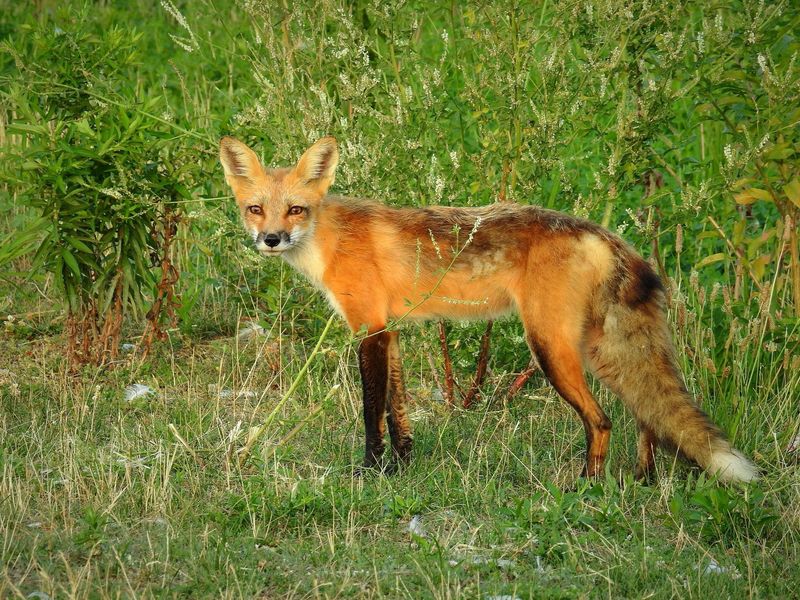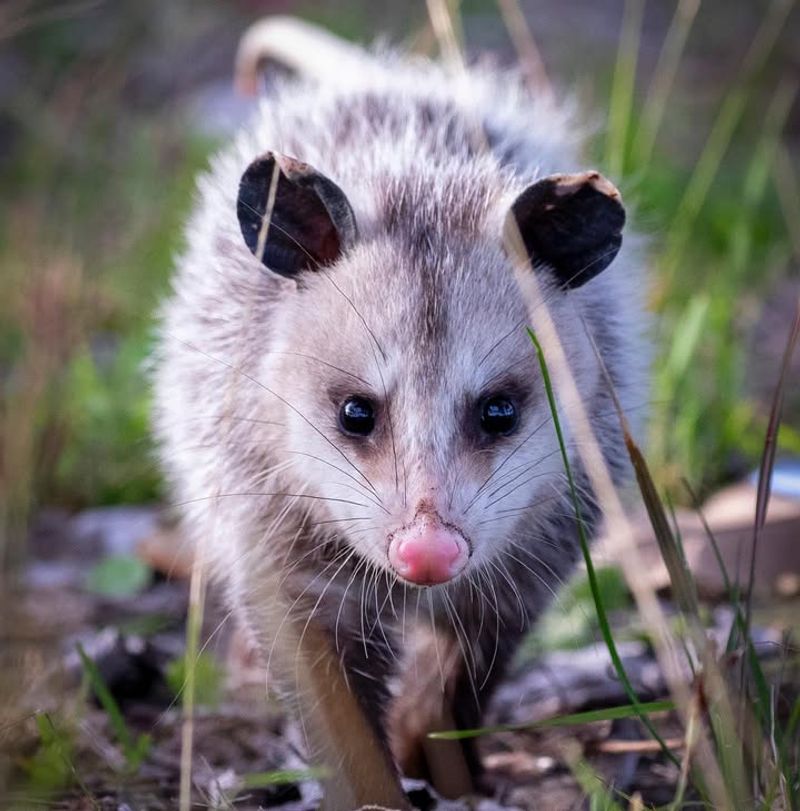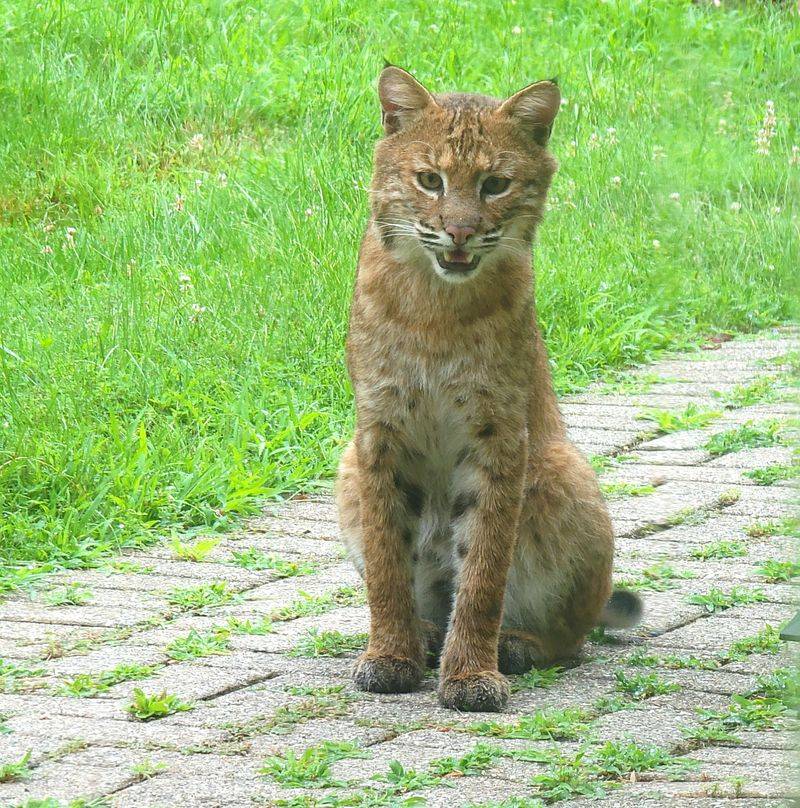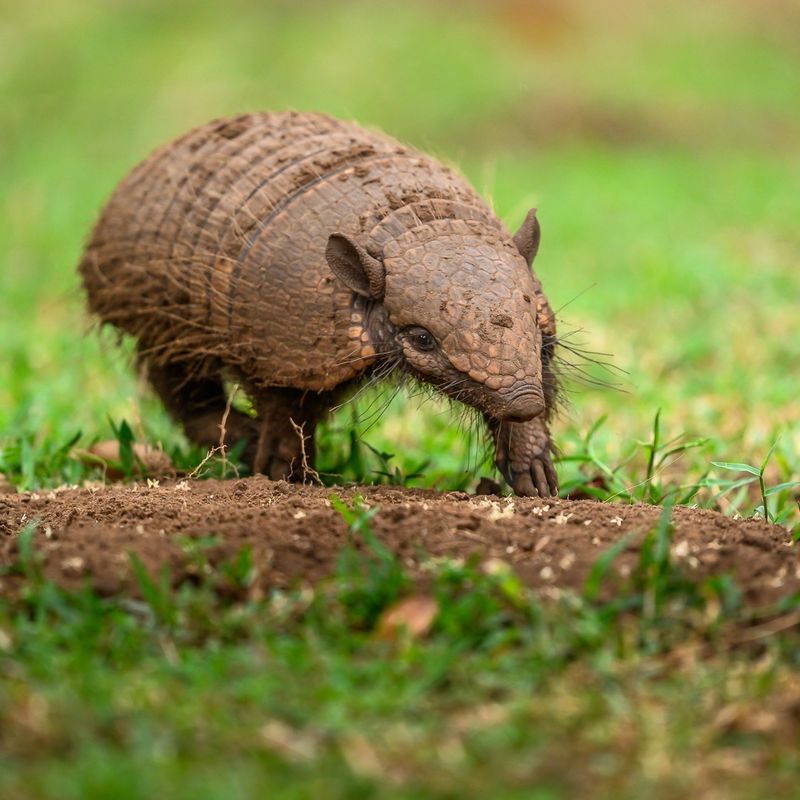Kansas cities are getting busier with unexpected wildlife, and it’s kind of shocking how many of these animals are quietly settling closer to backyards than most people realize.
I’ve noticed more of them popping up around neighborhoods lately, and it gives the whole place this strange mix of suburban calm and sudden wilderness energy.
It’s the kind of thing that makes you glance over the fence a little more often, just to see who decided to stop by next.
1. Coyotes
Spotting a coyote trotting down your Kansas street might seem surprising, but these adaptable hunters have learned to thrive alongside humans in cities throughout the region.
They typically hunt at dawn or dusk, searching for small rodents, rabbits, and sometimes pet food left outside, making backyards with accessible food sources particularly attractive to them.
Keep pets indoors during early morning and evening hours, and always secure garbage cans to discourage these clever animals from becoming regular visitors to your property.
2. White-Tailed Deer
Gardens across Kansas neighborhoods have become buffet tables for white-tailed deer who wander into town looking for tender plants, flowers, and vegetables to munch on daily.
These graceful creatures can leap over fences up to eight feet tall, making even well-protected yards accessible when they’re hungry enough to make the jump over.
Installing motion-activated sprinklers or using deer-resistant plants like lavender and marigolds can help protect your Kansas garden from these persistent but beautiful nighttime visitors roaming through.
3. Raccoons
With their mask-like facial markings and nimble paws, raccoons have mastered the art of raiding trash cans and pet food bowls throughout Kansas cities every single night.
These intelligent mammals can open latches, unscrew jar lids, and remember solutions to problems for up to three years, making them formidable opponents in backyard battles statewide.
Secure your trash with bungee cords or lock lids, bring pet food inside before dark, and seal any openings under porches to prevent raccoons from settling down.
4. Red Foxes
Red foxes with their stunning russet coats and bushy tails have been appearing more frequently in Kansas neighborhoods, especially in areas near parks or open green spaces nearby.
Unlike their larger coyote cousins, foxes are generally shy and prefer to avoid human contact, though they will hunt mice, rabbits, and insects in yards across Kansas.
If you spot one near your Kansas home, simply enjoy watching from a distance and avoid approaching, as they usually move along quickly without causing any trouble.
5. Opossums
North America’s only marsupial, the opossum, waddles through Kansas backyards at night eating ticks, insects, and overripe fruit that has fallen from trees onto the ground below.
Despite their somewhat scraggly appearance and habit of playing possum when scared, these creatures are incredibly beneficial because they consume thousands of disease-carrying ticks each season throughout Kansas.
Welcome opossums as natural pest controllers by leaving them alone, securing pet doors at night, and appreciating their important role in keeping your Kansas yard healthier overall.
6. Skunks
That distinctive black-and-white pattern belongs to skunks, who dig small holes in Kansas lawns while searching for grubs, beetles, and other insects hiding beneath the grass surface.
While famous for their powerful defensive spray, skunks are actually peaceful animals that only use their weapon when they feel threatened or cornered by predators or curious people.
Avoid startling skunks by making noise when walking outside after dark in Kansas, and eliminate grub problems in your lawn to reduce their interest in digging there.
7. Bobcats
Bobcats, with their spotted coats and distinctive ear tufts, are elusive wildcats that occasionally venture into Kansas city edges when hunting rabbits, squirrels, and other small prey animals.
These solitary hunters are roughly twice the size of house cats and prefer to avoid humans entirely, making actual encounters quite rare despite their growing presence in Kansas.
If you spot a bobcat near your Kansas property, stay calm, make yourself appear larger, back away slowly, and report the sighting to local wildlife authorities immediately.
8. Wild Turkeys
Flocks of wild turkeys have become surprisingly common sights in Kansas suburbs, strutting confidently across lawns, streets, and driveways like they own the entire neighborhood around them.
These large birds can weigh up to twenty pounds and travel in groups called rafters, often returning to the same Kansas yards daily if they find reliable food sources.
While generally harmless, turkeys can become aggressive during spring mating season, so give them plenty of space and never feed them to discourage dependence on human-provided meals statewide.
9. Armadillos
Armadillos, those strange armored mammals from the south, have been steadily expanding their range northward into Kansas, leaving distinctive cone-shaped holes in lawns while hunting for insects nightly.
With their poor eyesight but excellent sense of smell, these creatures can dig up entire sections of Kansas yards in a single night while searching for their favorite foods.
Discourage armadillo visits by reducing lawn irrigation to make the soil harder to dig, installing barriers around garden beds, and removing brush piles where they might hide.

